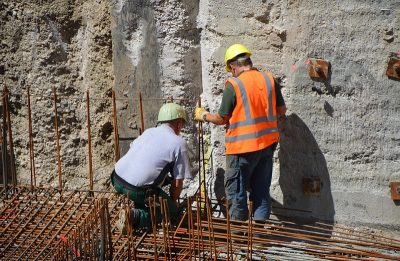Construction sector fights to retain foreign-born employees with citizenship schemes and other incentives ©Bloomberg Thomas Williams is a man on an unlikely mission. A white retired US naval officer living in Texas, he spends much of his time these days chasing after young Mexican-born workers and peppering them with questions about American history and government. As odd as this might seem, it comes with his current job. Mr Williams, 58, works for KPost, a Dallas roofing company that has topped off such local landmarks as the Perot Museum and AT&T Stadium, home of the Cowboys, the American football club. Like construction groups across the US, KPost relies heavily on immigrants, mostly from nearby Mexico, to do lower-wage physical jobs, and is struggling to find enough workers to keep up with demand. More On this topic IN The Big Read Mr Williams is part of the KPost solution. To help reduce labour turnover, he is working to make US citizens out of his immigrant colleagues. The company lends employees who are US residents the money to apply for citizenship, about $900, and forgives the debt if they remain at KPost another year. Mr Williams, an imposing barrel-chested man, fills out the forms and drills applicants on the civics questions asked on naturalisation tests — paying particular attention to confusing north-of-the-border names. “Every time I see them, I say, ‘Hey, who’s the chief justice of the Supreme Court?” he says. “They’ll remember [Barack] Obama and they might remember the vice-president. But when you had John Roberts as chief justice of the Supreme Court and you had another John as Speaker of the House, Boehner, that messed them up.” Mr Williams’ persistence is paying off. So far, 22 KPost workers have become US citizens under his tutelage in four years. “Step by step, he was right there,” says Enrique Rodriguez, 29, the first worker to emerge from the Thomas Williams school of citizenship. “He would quiz me at work, on the phone — any chance he had. He would randomly call me and just say, ‘Hey, let me ask you three quick questions.’” Labour shortages The KPost conversations are a far cry from the rhetoric on the presidential campaign trail this year as Republican candidates, led by Donald Trump, try to outdo each other in tapping anti-immigrant sentiment. But the requirements of the construction trade are different. US builders do not suffer from too many Mexican workers, but too few; they stand to gain from immigration reform, not lose. The joke in Texas is that if Mr Trump really wants to put up a wall between the US and Mexico, he will have to open the border first to find enough workers to finish the job. Across the US, the construction sector — which contributes 4 per cent to US gross domestic product — is suffering from chronic shortages of workers that are pushing up wages and slowing down activity. Of the 1,358 companies surveyed last year by the Associated General Contractors of America, 86 per cent had trouble filling positions, up three percentage points from 2014. More than seven out of 10 contractors reported difficulty finding carpenters, 60 per cent for electricians and 56 per cent for roofers. In 2014, a builder called Camden Property Trust installed security guards at sites in Denver, Colorado, and Austin, Texas, to prevent competitors from poaching workers. “I could be twice the size in terms of revenue if we had the flow of labour that we could be training,” says Chad Collins, owner of Bone Dry Roofing in Athens, Georgia. “We are handcuffed by the lack of a willing and skilled work force.” The impact is particularly dramatic in Dallas. Even as US recession fears grow, the city and its suburbs are thriving as companies such as Toyota, Facebook and JPMorgan Chase build facilities. “There is a workforce issue,” says Keith Post, KPost chief executive. “People are stealing and overpaying [workers].” Steve Little, the company’s president, says labour costs have risen 15 per cent in the past two years. Homebuilder Bruno Pasquinelli, president and founder of CB JENI Homes in Dallas, says delays are mounting. “It’s very difficult to predict when a house is going to get finished,” he says. “Houses that we used to build in 22 weeks are now taking upwards of 30 and bad ones could be 40.” The labour shortages are counterintuitive. US construction employment fell from 7.7m to 5.4m during the downturn, and it was assumed there would be plenty of workers once business recovered. But some industry veterans retired. Others headed to the oilfields as the shale boom gathered pace. And many went home to Mexico — creating a problem, given the sector’s dependence on immigrants. In the US, foreign-born workers account for 49 per cent of drywall installers and 44 per cent of roofers, according to the National Association of Home Builders. At KPost, 90 per cent of the 270 field workers are Latino, Mr Little says. An informal survey conducted by the FT on top of the Cowboys headquarters being built in Frisco, Texas, revealed that the overwhelming majority of KPost workers installing the roof were Mexican — the rest Guatemalan. The difficulty for employers is that what comes north can also go south. Using census data, John Burns Real Estate Consultants estimates the number of Mexican-born construction workers in the US fell from 1.89m in 2007 to 1.32m by 2014. A study by the Pew Research Center found the number of Mexicans living in the US illegally fell by about 1m between 2007 and 2014. The declines came amid a US border crackdown that resulted in nearly 2.9m people being deported between 2008 and 2015. At the same time, attempts at reaching a compromise on immigration reform — supported by the construction industry and hundreds of other US executives — fizzled out in Washington. “It’s pretty clear to me that the illegal immigrant is having a tough time coming back or is not even trying,” says






